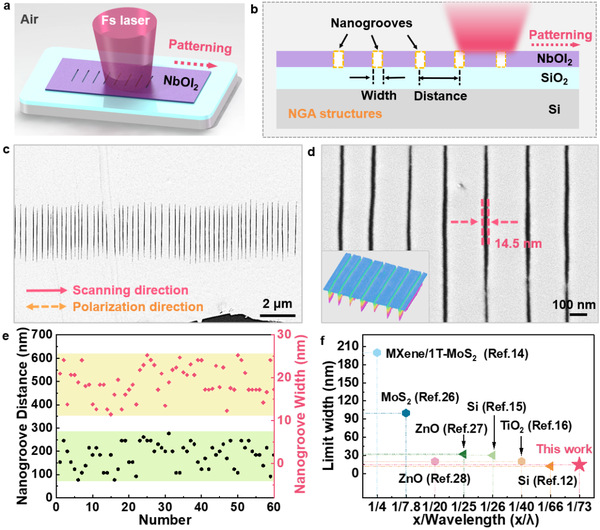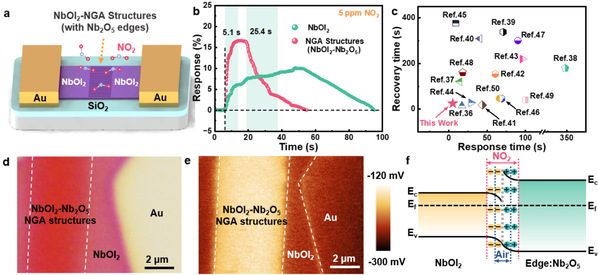News&Events
Research News
Breakthrough by Professor Lijun Yang’s Team: Controllable Super-Resolution Micro–Nanopatterning of Two-Dimensional Ferroelectric Materials
The team developed a method for fabricating super-resolution nano-groove array structures on multilayer niobium oxyiodide (NbOI₂) in ambient air using far-field femtosecond laser ablation, achieving groove widths as narrow as 14.5 nanometers—equivalent to one seventy-third of the laser wavelength (λ/73). Structural characterizations revealed that the nano-groove arrays preserved the intrinsic single-crystal features of NbOI₂ while forming amorphous niobium pentoxide (Nb₂O₅) edges as narrow as 3.2 nanometers. Through a combination of numerical simulations and experimental studies, the team uncovered that the formation mechanism of the nano-groove arrays arises from the coupling between femtosecond laser-induced surface plasmon polariton (SPP) periodic fields and localized near-field enhancement within the nano-grooves. By precisely controlling parameters such as the number of laser pulses, energy density, and polarization direction, they achieved accurate regulation of groove spacing, density, and orientation. Moreover, leveraging the rich heterojunctions formed between NbOI₂ and Nb₂O₅ in the nano-groove arrays and their synergistic effects, the team fabricated a NbOI₂-based gas sensor. Experimental results demonstrated the sensor’s excellent performance in detecting nitrogen dioxide (NO₂), with a response time of just 5.1 seconds. This study provides a novel approach for advancing nanolithography techniques in the fabrication of functional devices based on two-dimensional materials.
Harbin Institute of Technology is the first affiliation of the publication. PhD candidate Yanchao Guan and Associate Professor Ye Ding from the School of Mechatronics Engineering are co-first authors of the paper. Professor Lijun Yang from the School of Mechatronics Engineering at Harbin Institute of Technology, Professor Yang Li from the School of Materials Science and Engineering, and Associate Professor Yuqiang Fang from Shanghai Jiao Tong University are co-corresponding authors.
This research was supported by the National Key Research and Development Program of China, the National Natural Science Foundation of China, and other related funding programs.
Paper link: https://www.nature.com/articles/s41467-025-59520-9

Femtosecond Laser-Induced Fabrication of Super-Resolution Nano-Groove Arrays in Two-Dimensional Niobium Oxyiodide (NbOI₂)

Performance Characterization and Enhancement Mechanism of NbOI₂ Nano-Groove Array Gas Sensors

